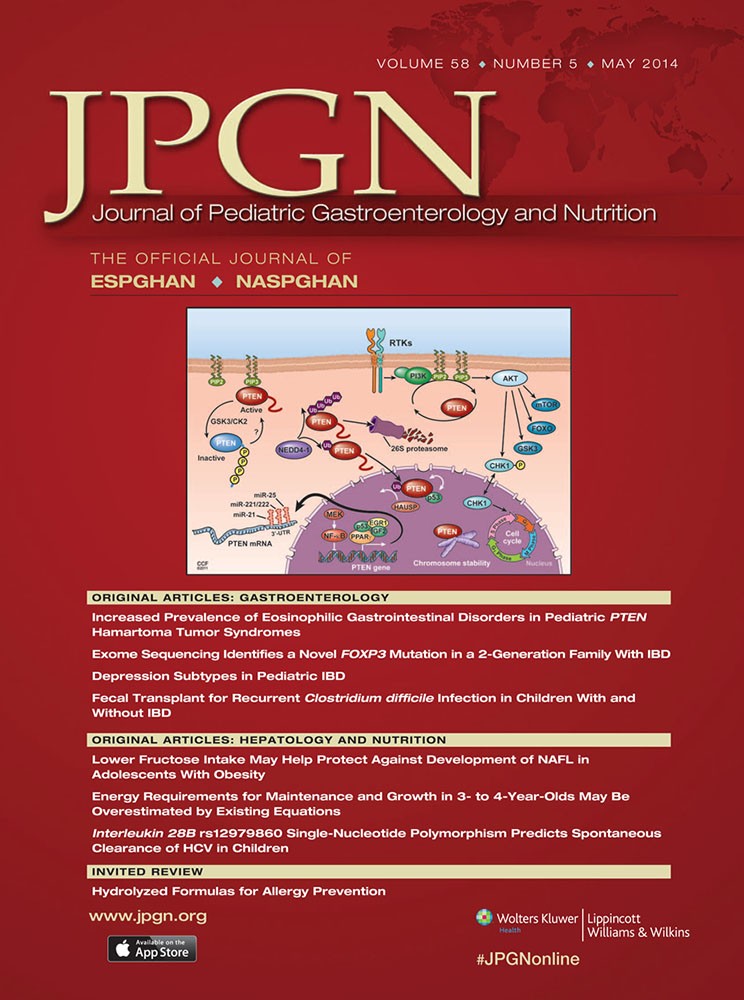Single-Center Experience With 1-Step Low-Profile Percutaneous Endoscopic Gastrostomy in Children
The authors report no conflicts of interests.
ABSTRACT
Objectives:
The 1-step low-profile percutaneous endoscopic gastrostomy (1-step PEG) uses a single procedure that allows immediate use of a low-profile device. The aim of the present study was to provide our experience with this device and to analyze complications and outcomes after the initial placement.
Methods:
We performed a retrospective chart review of pediatric patients with 1-step PEG placement done by our pediatric gastroenterologists between 2006 and June 2011. Patients were studied for a minimum period of 6 months.
Results:
A total of 121 patients were included in our study, with 23% infants. The most common indication for 1-step PEG placement was swallowing dysfunction in children with neurological impairment (49%). Postplacement complications included granulation tissue (52%), cellulitis (23%), leakage (21%), vomiting (17%), tissue breakdown (8%), failed placement (6%), embedded bolster (5%), perforation (0.8%), and bowel obstruction (0.8%). One-step PEG was maintained in 46 patients (38%). In the remaining 75 patients (62%), PEGs were changed to a balloon device in 66 patients and were completely removed in 9 patients. The most common indications for change were damaged PEG (19/75) and issues with size (11/75). The time to change ranged from <1 month to >4 years (14 ± 1.3 months). Sixty-eight percent of 1-step PEG changes/removal was performed with an obturator under brief inhalated anesthesia.
Conclusions:
The 1-step PEG has complication rates and outcomes comparable with standard PEGs.




